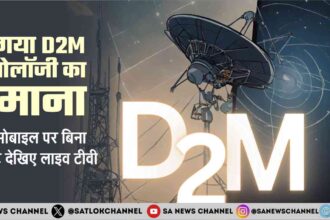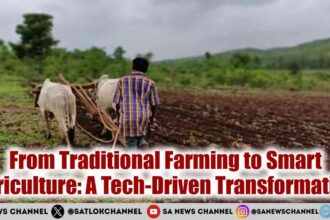The world is becoming more interconnected due to the Internet of Things (IoT). The Internet of Things (IoT) includes devices, vehicles, and home appliances. These objects have sensors and software that enable them to share data.
- The Internet of Things (IoT)
- What is The Internet of Things (IoT): Definition and Fundamentals
- Core Components and Architecture of IoT Systems
- The Evolution: From Connected Devices to Intelligent Ecosystems
- 7 Innovative Uses of IoT in Various Industries
- Smart Homes and Consumer Electronics
- Healthcare and Wearable Technology
- Industrial IoT and Manufacturing Automation
- Agriculture and Environmental Monitoring
- Retail and Supply Chain Management
- Transportation and Smart Mobility
- 5 Transformative Benefits of IoT Implementation
- Enhanced Efficiency and Productivity Gains
- Data-Driven Decision Making and Analytics
- Cost Reduction and Resource Optimization
- Improved Quality of Life and User Experience
- Environmental Sustainability and Energy Management
- The Future of IoT Technology: 6 Predictions for 2030
- Edge Computing and Distributed Intelligence
- AI and Machine Learning Integration
- 5G and Advanced Connectivity Solutions
- Digital Twins and Virtual Simulation
- Autonomous Systems and Robotics
- Quantum Computing Applications in IoT
- 8 Key IoT Trends Influencing 2025 and Beyond
- Enhanced IoT Security Frameworks
- Voice and Gesture-Controlled IoT Interfaces
- Predictive Maintenance Revolution
- Smart Cities Expansion
- Healthcare IoT Innovations
- Sustainable and Green IoT Solutions
- IoT in Retail and Customer Experience
- Industrial IoT and Industry 4.0
- 4 Key Challenges in the IoT World
- Security Vulnerabilities and Privacy Concerns
- Interoperability and Standardization Hurdles
- Ethical Considerations and Data Ownership
- Infrastructure and Connectivity Limitations
- IoT in India: 5 Key Developments and Opportunities
- Smart City systems and Urban Development
- Conclusion: Embracing the IoT-Powered Future
- FAQ
- What is the Internet of Things (IoT)?
- How does IoT impact daily life?
- What are the benefits of implementing IoT solutions?
- What are the major challenges facing the IoT landscape?
- How is IoT being used in different industries?
- What are the future trends and predictions for IoT?
- How is IoT being used in India?
- What is the role of IoT in Industry 4.0?
The Internet of Things (IoT)
This technology is transforming our lives by making things more intelligent.It’s applicable not only in homes but also in workplaces. With the Internet of Things, devices communicate with one another and their environment.This enhances efficiency and user-friendliness in our world.
Key Takeaways
- The Internet of Things (IoT) is a system of connected devices that gather and share data.
- It is changing many parts of our lives, such as homes and businesses.
- IoT allows devices to communicate with one another and their environment.
- This technology makes the world more efficient and convenient.
- IoT has numerous applications, from smart homes to industrial automation.
What is The Internet of Things (IoT): Definition and Fundamentals
Let’s explore the basics of IoT. The Internet of Things (IoT) is a network of devices.These consist of items such as vehicles, household devices, and others. They are equipped with sensors, software, and have the ability to exchange data.
Core Components and Architecture of IoT Systems
The key components of IoT systems include sensors and actuators. They communicate with the environment. Next, there are connectivity protocols that facilitate data sharing.
The structure consists of layers. Initially, we have devices. Following that, there is connectivity, data processing, and finally, the application layer.
- Sensors and Actuators
- Connectivity Protocols (e.g., Wi-Fi, Bluetooth)
- Data Processing and Analytics
- Application Layer (User Interface)
The Evolution: From Connected Devices to Intelligent Ecosystems
The Internet of Things (IoT) has evolved beyond merely linking devices. Today, it focuses on creating intelligent systems. This transformation is driven by artificial intelligence and machine learning.
IoT is transforming business operations. It provides new opportunities for growth and increased efficiency.
IoT continues to improve. We can expect to see more smart and interconnected systems that enhance our lives and streamline work.
7 Innovative Uses of IoT in Various Industries
IoT technology is transforming numerous sectors. It enhances efficiency and connectivity. The Internet of Things is now a reality, reshaping our everyday lives and work.
Smart Homes and Consumer Electronics
IoT makes residences smarter. It includes gadgets like thermostats and security cameras. You can manage them from anywhere, conserving energy and simplifying life.
Healthcare and Wearable Technology
In the healthcare sector, IoT aids in patient care. Wearable gadgets monitor health and fitness. This provides doctors with crucial data to assist patients.
Industrial IoT and Manufacturing Automation
Industrial IoT (IIoT) revolutionizes manufacturing. It assists with maintenance and quality assurance. This leads to increased productivity and less downtime.
Also Read: The Ultimate List of Best Tech Conferences To Attend
Agriculture and Environmental Monitoring
IoT supports farmers. It monitors soil moisture and crop health. This enables farmers to make better decisions and grow more food.
Retail and Supply Chain Management
In retail, IoT enhances inventory management and customer service. It also optimizes supply chains. This allows businesses to operate efficiently.
Transportation and Smart Mobility
IoT alters our travel experiences. It aids in traffic management and vehicle connectivity. This results in safer and quicker travel. IoT is more than just a trend. It’s positively impacting industries. As we approach 2025, we will witness even more ways IoT will facilitate growth and transformation.
5 Transformative Benefits of IoT Implementation
The Internet of Things (IoT) is changing the world. It significantly alters how we operate. Businesses that adopt IoT experience major enhancements in various sectors.
Enhanced Efficiency and Productivity Gains
IoT streamlines processes by automating tasks. It maximizes resource utilization. For example, in manufacturing, IoT sensors keep track of machinery. They signal when maintenance is necessary and minimize downtime.
Data-Driven Decision Making and Analytics
The Internet of Things (IoT) supports informed decision-making by delivering real-time data. It shows the current status of operations, customer preferences, and market dynamics. This data aids in better planning and business expansion.
Cost Reduction and Resource Optimization
The Internet of Things (IoT) contributes to cost savings by using resources wisely and minimizing waste. For instance, smart energy systems in buildings use less electricity. This results in considerable savings.
Improved Quality of Life and User Experience
IoT enhances life by simplifying tasks and adding enjoyment. It is present in smart homes, healthcare, and travel. Wearable technology, for instance, monitors health and provides advice to help individuals feel better.
Environmental Sustainability and Energy Management
IoT benefits the environment by managing energy efficiently. It reduces harmful emissions and promotes eco-friendly living. Smart grids, for example, allocate power to where it is most needed and harness renewable energy.— IoT Expert
The Future of IoT Technology: 6 Predictions for 2030
The next decade will be thrilling for IoT. Six key predictions will transform the tech landscape.
IoT will continue to expand, with emerging trends leading the charge. Here are six forecasts for 2030:
Edge Computing and Distributed Intelligence
Edge computing will expand, enabling quicker data processing. This is crucial for applications like self-driving vehicles and factory automation.
AI and Machine Learning Integration
AI and machine learning will enhance IoT intelligence. This will result in improved data analysis and decision-making. It will also boost maintenance and efficiency.
5G and Advanced Connectivity Solutions
5G networks will provide fast, dependable internet for IoT. This will facilitate IoT growth in sectors such as manufacturing, healthcare, and logistics.
Digital Twins and Virtual Simulation
Digital twins will become increasingly prevalent. They allow us to test and simulate IoT systems. This will reduce costs and enhance product development and maintenance.
Autonomous Systems and Robotics
Autonomous systems and robots will leverage IoT for communication. This will make manufacturing and logistics more efficient and adaptable.
Quantum Computing Applications in IoT
Quantum computing will begin to assist IoT. It will enhance data analysis and processing capabilities. This will create new opportunities for IoT in areas like data security and optimizing complex systems.
These predictions highlight the exciting transformations expected in IoT by 2030. As these technologies advance, they will introduce new concepts and changes across various industries.
8 Key IoT Trends Influencing 2025 and Beyond
As we approach 2025, the IoT landscape will undergo significant transformations. Emerging trends such as AI, 5G, and edge computing will alter our interaction with IoT across various sectors.
Enhanced IoT Security Frameworks
IoT systems are becoming increasingly intricate. There is a pressing need for improved security measures. New security strategies will leverage AI to detect and mitigate threats.
Voice and Gesture-Controlled IoT Interfaces
Using IoT will soon become more intuitive. We can expect a rise in voice and gesture controls, making the operation of IoT devices easier and more enjoyable.
Predictive Maintenance Revolution
Predictive maintenance represents a major shift. It utilizes IoT data to anticipate equipment failures. This leads to reduced downtime and enhanced productivity.
Smart Cities Expansion
The development of smart cities will accelerate. IoT will enhance urban living by optimizing infrastructure and services, improving the quality of life in cities.
Healthcare IoT Innovations
IoT is transforming healthcare. It enhances patient care through remote monitoring and tailored medical solutions, providing greater support for patients.
Sustainable and Green IoT Solutions
IoT is becoming more environmentally friendly. It emphasizes energy efficiency and waste reduction, benefiting our planet.
IoT in Retail and Customer Experience
IoT is enhancing the shopping experience. It aids in inventory management and personalizes the shopping journey, boosting customer satisfaction and loyalty.
Industrial IoT and Industry 4.0
IoT plays a crucial role in Industry 4.0. It enhances manufacturing through automation and smart maintenance, increasing business efficiency and competitiveness.
In summary, IoT is set to evolve significantly by 2025. We will witness improved security, more user-friendly interfaces, and innovative applications across numerous fields. These developments will define the future of IoT.
4 Key Challenges in the IoT World
The Internet of Things (IoT) has changed many parts of our lives. However, it also presents significant challenges. Understanding these challenges is essential for the successful growth of IoT.
Security Vulnerabilities and Privacy Concerns
IoT encounters serious issues such as security risks and privacy concerns. An increase in devices leads to more opportunities for cyber-attacks. Ensuring the safety of IoT devices and safeguarding privacy is crucial.
Interoperability and Standardization Hurdles
IoT devices from various manufacturers often struggle to work together. This is due to the lack of a universal standard. This lack of compatibility hinders communication between devices, limiting the potential of IoT.
Ethical Considerations and Data Ownership
The vast amounts of data generated by IoT raise important ethical issues and questions regarding data rights. We require clear guidelines for data usage and ownership to maintain trust in IoT.
Infrastructure and Connectivity Limitations
The expansion of IoT is also restricted by infrastructure and connectivity limitations. Strong and widespread connectivity is necessary for IoT to be adopted on a large scale.
Addressing these challenges is crucial for IoT to fulfill its potential. It is vital for IoT to continue evolving and being utilized across various sectors.
IoT in India: 5 Key Developments and Opportunities
IoT technology is growing fast in India. This is thanks to government help and more people using it. It’s changing many areas, like cities and farms, making life better.
Government Initiatives and Digital India Programs
The Indian government is pushing IoT forward with the Digital India program. It wants to make society and frugality digital. They have made rules to help IoT grow.
Smart City systems and Urban Development
India’s Smart City Mission is making metropolises smarter. Places like Jaipur and Surat are using IoT for better business, lights, and trash. It’s making the city a bigger more.
Industry Adoption and Innovation Hubs
Indian businesses are using IoT to work better. Cities like Bengaluru and Pune are hubs for new IoT ideas. They’re creating cool tech for many fields.
Agricultural IoT for Indian Farmers
IoT is helping farmers grow more and waste less. It includes smart watering and soil checks. Farmers can now make choices based on data.
Healthcare IoT
In healthcare, IoT is helping with remote checks and telemedicine. This is great for rural areas where health care is hard to get.
Conclusion: Embracing the IoT-Powered Future
The Internet of Things (IoT) is changing the world. It improves industries and enriches our lives. IoT is used in many areas like smart homes, healthcare, and more.
The future of IoT is very bright. With edge computing, AI, and 5G, things will get better. This will help the economy and improve life for everyone.
To maximize IoT, we need to address some major challenges. We have to focus on security, ensuring compatibility, and creating robust systems. This will enable India to excel in IoT and boost its economy.
The Internet of Things (IoT) is shaping the future, and we must embrace it. It will transform our world in numerous ways. This makes IoT an exciting area to observe and investigate.
FAQ
What is the Internet of Things (IoT)?
The Internet of Things (IoT) is a network of devices. These include things like cars, home appliances, and more. They have sensors and software that let them share data.
How does IoT impact daily life?
IoT changes how we live and work. It makes our homes and cities smarter. This makes our lives easier and more efficient.
What are the benefits of implementing IoT solutions?
Using IoT solutions brings many benefits. It makes things more efficient and helps us make better choices. It also saves money and helps the environment.
What are the major challenges facing the IoT landscape?
The IoT world faces big challenges. These include security problems, making sure devices work together, and thinking about ethics. There are also limits to how much we can do.
How is IoT being used in different industries?
IoT is used in many fields. It helps in healthcare, making things, farming, shopping, and moving people around. It makes these areas better and more efficient.
What are the future trends and predictions for IoT?
The future of IoT looks exciting. We’ll see more edge computing, AI, and 5G. There will also be digital twins, self-driving systems, and quantum computing.
How is IoT being used in India?
In India, IoT is used in many areas. It’s part of smart city projects and helps in farming and healthcare. It’s also used in government and industry.
What is the role of IoT in Industry 4.0?
IoT is key in Industry 4.0. It helps make factories smarter and lets us predict and monitor things in real time. This boosts efficiency and helps us make better choices.









